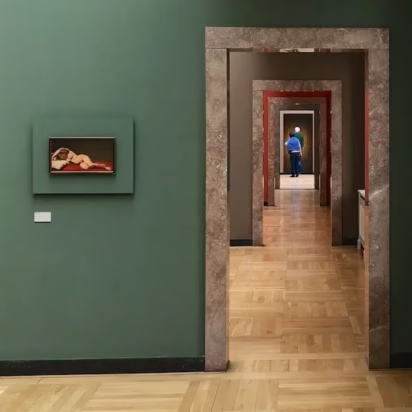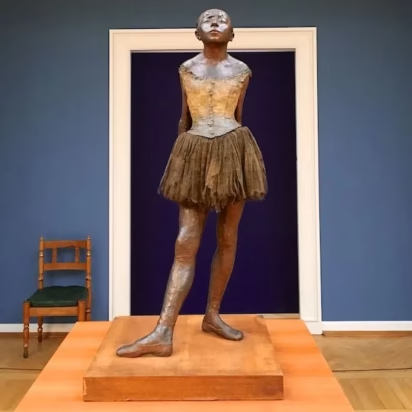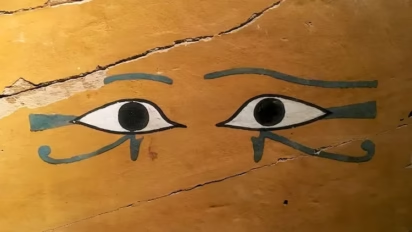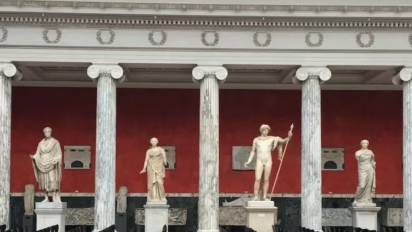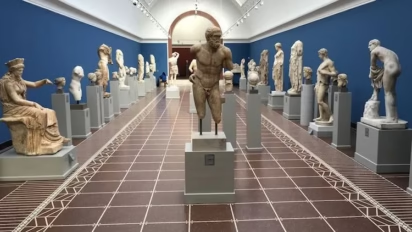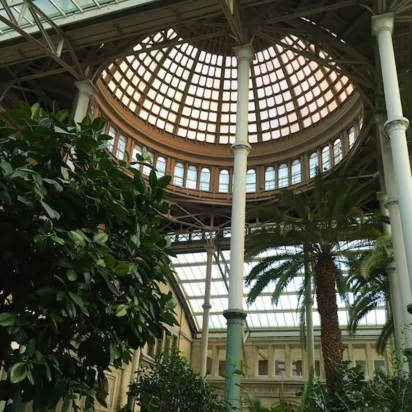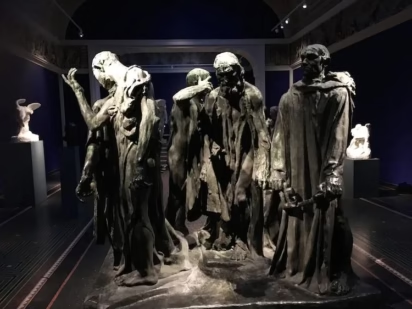Visit the Ny Carlsberg Glyptotek art museum in Copenhagen to see the largest antiquities collection in Scandinavia and a fine exhibition of 19th century Danish and French paintings and sculptures.
Visitors to the Ny Carlsberg Glyptotek in the center of Copenhagen enjoy two completely diverse themes in the same museum: 19th-century Danish and French art and the most important collection of ancient Middle Eastern and Mediterranean artifacts in northern Europe. The European art in the Glyptotek is particularly known for the large collection of sculptures as well as Danish Golden Age and French Impressionist paintings. The vast collection of antiquities is shown in an exhibition on the cultures of the Mediterranean and ancient Egyptian, classic Greek and Roman art, and statues. Admission is free on Tuesdays.
Visit Ny Carlsberg Glyptotek in Copenhagen
The Ny Carlsberg Glyptotek was founded by Carl Jacobsen (1842-1914) of the famous Carlsberg beer-brewing dynasty. He was an avid art collector and donated his art and antiquities collections to the Danish nation. Then, as indeed now, the exhibitions of the Glyptotek reflect his interests: 19th-century Danish and French art, which was largely modern and contemporary during his lifetime, as well as an astonishingly large and important collection of art and objects from antiquity.
The original Glyptotek building, designed by Vilhelm Dahlerup opened in 1897 to house the art collection. A decade later, the famous winter garden with an impressive cupola and a second building by Hack Kampmann opened to house the collection of antiquities. In 1996, a further modern building was added and is used mostly for temporary exhibitions.
Currently, the permanent exhibitions in the Ny Carlsberg Glyptotek are divided into the following main exhibitions:
- Danish paintings (1780-1930)
- French paintings (1800-1870)
- French and Danish sculptures
- The Ancient Mediterranean
- Egypt, including some mummies
- Greek and Roman sculptures
Many of the displays are theme-based. The Glyptotek generally does not attempt to present a comprehensive overview or chronological display of the periods involved but rather shows the best pieces available to illustrate a theme or specific group of artists.
Danish Art in the Ny Carlsberg Glyptotek
The Danish art in the Ny Carlsberg Glyptotek covers the period 1780 to 1930. The main emphasis here is on paintings from the Danish Golden Age – ca. 1800 to1860.
Works are mostly displayed thematically such as the Golden Age dreams of antiquity and Italy, landscapes, portraits, and the virtuosity of the age.
Famous painters represented include C.W. Eckersberg, Jens Juel, Christen Købke, and the Norwegian painter J.C. Dahl. A special section is dedicated to the works of Herman Freund – this German-born sculptor was long the principal assistant of the most famous Danish sculptor Bertel Thorvaldsen. (His entire oeuvre is on display in the Thorvaldsens Museum next to the Christiansborg a few blocks towards the center of Copenhagen.)
This collection is a good introduction to Danish and Nordic Golden Age paintings, especially for visitors unable to see the vast collection on display in the National Gallery of Denmark.
French Art in the Ny Carlsberg Glyptotek
The Glyptotek owns the largest collection of French 19th-century art and Impressionist art in Denmark. Helge Jacobsen, son of the museum’s founder, donated many works.
The French paintings range in style from the Romantics to realism but Impressionism is particularly well represented. The museum owns 47 works by Paul Gauguin (but many are currently traveling). The specific works on display rotate frequently and are often used to enhance temporary exhibitions on a variety of themes.
Danish and French Sculptures in the Glyptotek
The Ny Carlsberg Glyptotek exhibits a large collection of mostly nineteenth-century sculptures by French and Danish sculptors. The emphasis is on classical-style marble figures but the collection also includes a number of bronzes by Rodin and Degas, as well as newer works.
In addition to Bertel Thorvaldsen, talented 19th-century Danish sculptors included Vilhelm Bissen, Herman Wilhelm Bissen, Jerichau, and Freund.
The Glyptotek owns 42 works by Rodin with statues on display including such famous works as The Kiss, The Thinker, and Burghers of Calais.
Jacobsen called his collection a Glyptotek – a repository of sculptures rather than an academic museum display. Most of the sculptures are free-standing allowing visitors to admire them from all sides and up close.
Degas Sculptures in the Glyptotek in Copenhagen
The Ny Carlsberg Glyptotek has a magnificent collection of 72 Degas bronze sculptures – one of only four museums in the world with a full set of Edgar Degas’ studies of dancers, women, and horses.
The collection includes a bronze copy of his most famous sculpture: The Little Fourteen-Year-Old Dancer (1880-81). The original in wax was the only sculpture Degas ever exhibited during his life (now in the National Gallery of Art in Washington D.C.).
(The Degas sculptures are not currently on display, nor are most of the Gauguin paintings.)
Antiquities in the Ny Carlsberg Glyptotek
The Ny Carlsberg Glyptotek has the largest collection of antiquities in Scandinavia. It is currently divided into two permanent displays: Ancient Art and the Ancient Mediterranean.
The Ancient Art collection covers mostly Egyptian (3000 BC – AD 400), Greek (600 – 100 BC), and Roman (100 BC to AD 500) art. The Egyptian collection includes the traditional themes of burial chambers and religion while the focus of the Roman and Greek displays are mostly marble sculptures.
Don’t miss the Central Hall of the Glyptoteket. The architecture was inspired by a Greek temple with ionic colonnades lining three sides and a Greek temple façade above the stage. Carl Jacobsen paid for this hall so much of the detailing is in real marble. Roman portrait statues are placed between the columns with marble sarcophagi and tomb art in the colonnades. The hall has wonderful acoustics and is often used for concerts.
The Ancient Mediterranean covers the cultural history of civilizations from Afghanistan to Spain from around 6000 AD to the end of the Roman Empire around AD 400. The museum shows how the Egyptians, Babylonians, Phoenicians, Greeks, and Romans lived, traded, worshipped, died, and presumably lived after death.
The nearby National Museum of Denmark also has a surprisingly fine collection of antiquities in addition to the huge Danish culture and history displays.
Visitors Information for the Ny Carlsberg Glyptotek
Opening Hours of the Glyptoteket
The Ny Carlsberg Glyptotek is open Tuesday to Sunday from 10:00 to 17:00 (closing at 21:00 on Thursday, if not a holiday).
The museum is closed on Mondays (except on some major holidays), January 1, June 5, December 24, and 25.
The small café in the winter garden serves drinks and small lunches. A further café on the roof opens according to the season.
Photography is mostly allowed. Drawing of most works is allowed (but in pencil only). Folding chairs and drawing boards may be borrowed for free.
Admission Tickets for the Glyptoteket
Admission to the Ny Carlsberg Glyptotek is DKK115, free for children up to 18, and DKK85 for students under 27.
Admission to the permanent collection is free for all on Tuesday (but DKK60 for temporary exhibitions).
Free guided tours in English are given usually from mid-June to mid-September at noon and 13:00.
Most of the descriptions in the museum are in both Danish and English.
What to See in the Ny Carlsberg Glyptotek
The Ny Carlsberg Glyptoteket is much too big to properly enjoy in a single visit. It may be sensible to concentrate on one or two collections and just glance at the highlights of others if a return visit is not possible.
The Danish art (mostly paintings) is on the first upper level of the Dahlerup building, where the main entrance is located. Only a very small selection of the French art collection is currently on display on the second upper level of the Dahlerup building.
Danish and French sculptures are on the ground floor of the same building with entrances also from the winter garden.
The Ancient Mediterranean exhibition is on the lower ground floor level while the Ancient Art collection and Central Hall are on the upper level of the Kampmann building – enter from the winter garden.
The modern Henning Larsen is currently mostly used for temporary exhibitions. Also, visit the rooftop for beautiful views of the Copenhagen skyline. The Bissen Marbles are currently on display near the entrance to the modern wing.
Temporary exhibitions are usually in the Henning Larsen building and on the upper ground level of the Dahlerup building.
Location and Transportation of the Ny Carlsberg Glyptotek
The Ny Carlsberg Glyptoteket, Dantes Plads 7, DK-1556 Copenhagen V, tel. +45 33 41 81 41 is located in central Copenhagen at the back of the Tivoli Gardens funfair park.
The entrance is from H.C. Andersens Boulevard but don’t miss the free small park at the back of the building. The monumental bronze The Thinker (1904) is one of around two dozen completed during the lifetime of Rodin.
Walking and cycling are the easiest transportation options from most other sights (and the main train station) in central Copenhagen. Rådhuspladsen is the closest metro station while buses 2A, 11, 31, and 37 stop at the museum (stop: Glyptoteket / Tietgensgade).
Further Sights Near the Glyptoteket
Tivoli Gardens is right across the road from the Glyptotek (but the entrance is on the far side, a long block away – past the town hall (Rådhus). The National Museum of Denmark is a short block away, which is near the Thorvaldsens Museum and the Christiansborg palace complex (with free viewing platform via elevator) on Slotholmen Island. The Museum of Copenhagen, a small local history museum, opened recently near the Glyptotek.
See More Art in Copenhagen
The National Gallery of Denmark has the largest collection of Danish and Nordic art in the world and is a top sight for any art lovers visiting Denmark. The National Museum of Denmark also has many artworks in its collection, as well as a small but exquisite collection of antiquities. The Thorvaldsens Museum is filled with the sculptures of Denmark’s most famous sculptor. Popular day-trip destinations from Copenhagen are famous modern art museums: Arken, Ordrupgaard, and especially the Lousiana, which is hugely popular with locals and foreign visitors alike.


